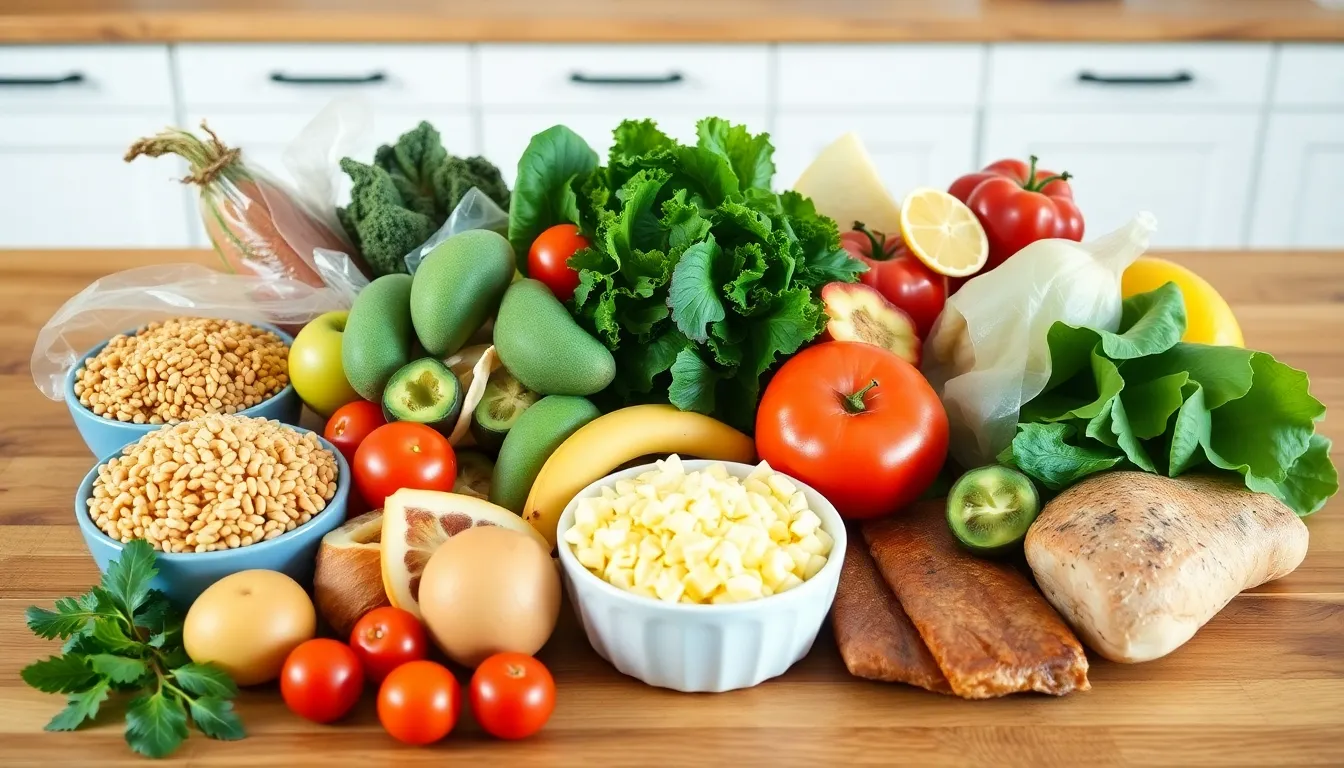Table of Contents
ToggleLiving with painful bladder syndrome can feel like a never-ending game of “What did I eat?” where the stakes are high and the options are limited. For those grappling with this condition, dietary modifications aren’t just a suggestion—they’re a lifeline. Imagine ditching the foods that trigger discomfort and discovering a new culinary world where every bite is a step toward relief.
But don’t worry, it’s not all bland rice cakes and water! With the right knowledge and a sprinkle of creativity, anyone can transform their plate into a delicious haven. From identifying sneaky irritants to embracing bladder-friendly delights, this journey can be both enlightening and enjoyable. So buckle up for a tasty ride through dietary changes that could make all the difference in managing painful bladder syndrome. Who knew eating could be this much fun?
Understanding Painful Bladder Syndrome
Painful bladder syndrome, also known as interstitial cystitis, affects a significant number of individuals, causing discomfort and urgency regarding urination. Recognizing its complexities improves management strategies.
Definition and Symptoms
Painful bladder syndrome presents as chronic pelvic pain, frequent urination, and urgency. Those affected may experience pain during bladder filling or relief post-urination. Symptoms can vary in severity and may include painful intercourse, pressure in the pelvic region, and nocturia, leading to disrupted sleep. Patients often describe a constant need to urinate, which can significantly impact daily activities and quality of life.
Causes and Risk Factors
The causes of painful bladder syndrome remain largely unknown, though several factors contribute to its development. Excessive stress may exacerbate symptoms. Additionally, women are more prone than men, indicating a potential hormonal influence. Genetic predisposition also plays a role, with some individuals likely inheriting susceptibility. Furthermore, certain lifestyle choices, like smoking and alcohol consumption, may increase the risk, highlighting the need for a comprehensive approach to prevention and management.
The Role of Diet in Painful Bladder Syndrome

Diet plays a critical role in managing painful bladder syndrome (PBS). Specific food choices can exacerbate symptoms and affect quality of life.
Foods to Avoid
Certain foods trigger symptoms for many individuals. Citrus fruits often cause irritation and discomfort. Artificial sweeteners, including aspartame and saccharin, may also provoke reactions. Highly acidic foods, such as tomatoes and vinegar, increase bladder sensitivity. In addition, caffeine, found in coffee and tea, acts as a diuretic, leading to more frequent urination. Spicy foods can lead to inflammation in some people. Lastly, carbonated beverages often worsen symptoms due to carbonation and acidity.
Beneficial Foods and Nutrients
Incorporating specific foods can provide relief from symptoms. Whole grains, including brown rice and quinoa, are gentle on the bladder. Lean proteins, such as chicken and fish, support overall health without irritation. Non-citrus fruits, like bananas and pears, offer vitamins without triggering flare-ups. Vegetables, particularly leafy greens and cucumbers, are hydrating and soothing. Consuming healthy fats, such as olive oil and avocados, promotes overall wellness. Probiotic-rich foods, like yogurt, aid gut health and may support bladder function. Herbal teas, particularly chamomile, can have a calming effect and ease discomfort.
Dietary Modification Strategies
Dietary modifications play a significant role in managing painful bladder syndrome. Individuals often find success by following structured strategies focused on identifying and eliminating triggers.
Keeping a Food Diary
Maintaining a food diary helps monitor food intake and symptoms. It allows individuals to track which foods exacerbate discomfort. Writing down meals and any related symptoms daily promotes awareness of dietary patterns. Identifying specific triggers becomes easier through this documentation, guiding choices toward bladder-friendly options. This proactive approach aids individuals in understanding their unique responses to different foods.
Elimination Diet Approach
An elimination diet involves removing potential trigger foods for a specific timeframe. Participants generally begin with a baseline diet free from known irritants, such as caffeine and acidic items. After a few weeks, they slowly reintroduce foods one at a time. This method provides insights into which foods worsen symptoms. Observing changes during reintroduction helps pinpoint specific triggers, enabling tailored dietary adjustments for better symptom management.
Professional Guidance and Support
Professional advice plays a crucial role in managing painful bladder syndrome through dietary modifications. Accessing tailored support ensures effective strategies that suit individual needs.
Consulting with a Dietitian
Consulting with a registered dietitian benefits individuals dealing with painful bladder syndrome. These experts provide personalized meal plans, focusing on foods that alleviate symptoms. Identifying trigger foods becomes easier with a dietitian’s guidance. They recommend tracking food intake and symptoms to establish connections. Education on nutrition helps individuals make informed choices, enhancing overall well-being. Regular consultations allow for adjustments based on progress, ensuring that dietary strategies remain effective.
Joining Support Groups
Joining support groups creates a sense of community for individuals experiencing painful bladder syndrome. Members share their challenges and successes while exploring dietary modifications together. These groups offer emotional support, fostering resilience in the face of daily struggles. Resources, such as meal ideas and coping strategies, often emerge from group discussions. Connections with others in similar situations enhance understanding of the condition. Encouragement from fellow members reinforces positive changes and shared experiences, promoting both emotional and dietary well-being.
Making dietary modifications can significantly improve the quality of life for those living with painful bladder syndrome. By identifying trigger foods and embracing bladder-friendly options, individuals can find relief and enjoy their meals again. Keeping a food diary and seeking professional guidance are essential steps in this journey.
Support from registered dietitians and community groups can provide valuable insights and encouragement. With the right approach to diet and lifestyle, managing PBS becomes a more attainable goal. Embracing these changes not only alleviates symptoms but also fosters a sense of empowerment and control over one’s health.







